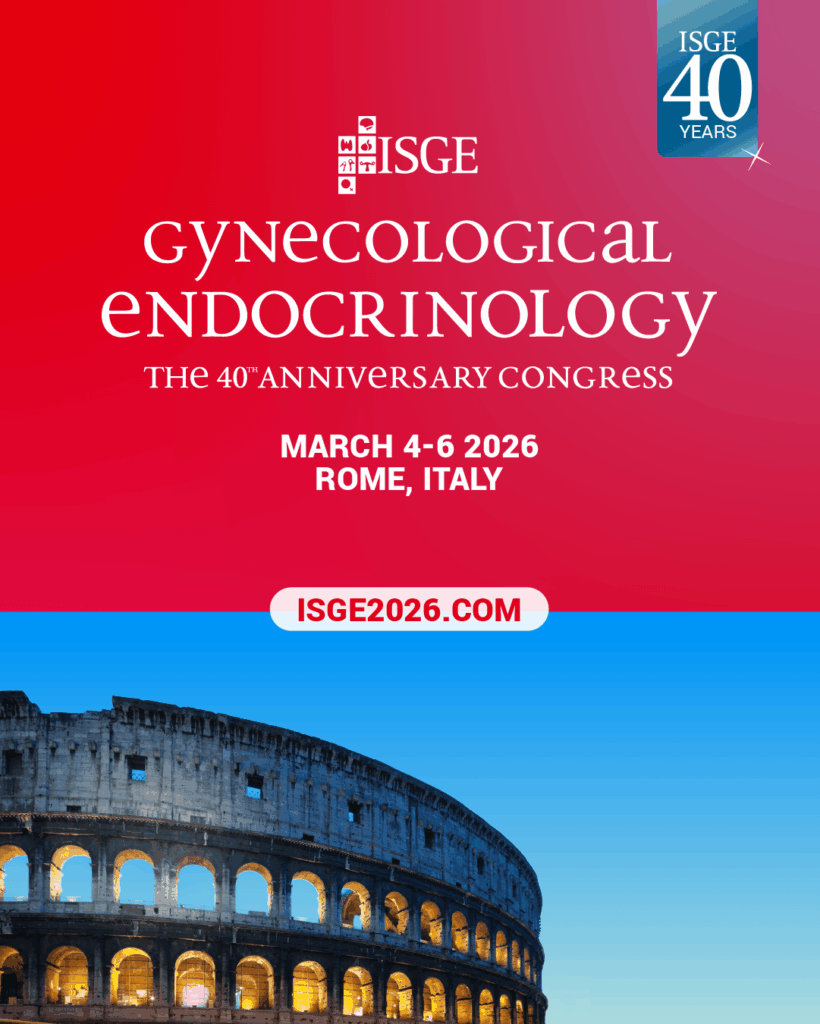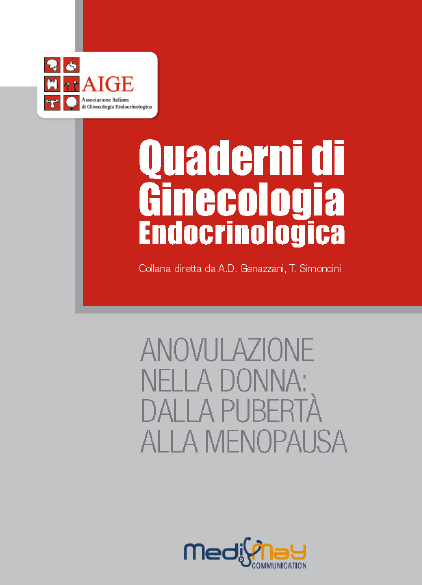-
Gilberto Tena, Carlos Moran, Rocio Romero, Segundo Moran
Ovarian morphology and endocrine function in polycystic ovary syndrome
Arch Gynecol Obstet 284:1443–1448, 2011Abstract
Purpose To assess the relationship between ovarian morphology, hormonal levels and anthropometrical characteristics
in a group of patients with polycystic ovary syndrome (PCOS).
Methods This prospective, cross-sectional study included 82 patients with diagnosis of PCOS and 21 women with regular menstrual cycles without hyperandrogenism. They were submitted to endovaginal pelvic ultrasound. Anthropometric measures and hormonal levels of LH, FSH, insulin, total testosterone (T), free T, dehydroepiandrosterone and dehydroepiandrosterone sulfate were evaluated. The morphology of polycystic ovary (PCO) was considered when 12 or more follicles, less than 10 mm in diameter, in one or both ovaries, were observed. PCOS patients were divided into two groups: with PCO (n = 51) and without PCO (n = 31).
Results In 51 out of 82 (62%) patients with PCOS, an image of PCO was observed. PCOS Patients with PCO showed a significantly greater body mass index and hip perimeter than PCOS patients without PCO. Higher levels of total T and free T were found in PCOS patients with PCO compared to those without PCO.
Conclusion PCOS patients with PCO on ultrasound present greater hyperandrogenism and obesity than PCOS patients without PCO. The presence of PCO appears to indicate a major clinical alteration of PCOS. -
Elisabeth Lerchbaum, Hans-Jürgen Gruber, Verena Schwetz, Albrecht Giuliani, Reinhard Möller, Thomas R Pieber, Barbara Obermayer-Pietsch
Fatty liver index in polycystic ovary syndrome
Eur J Endocrinol 165: 935-943, 2011Abstract
Introduction Women with polycystic ovary syndrome (PCOS) frequently suffer from metabolic disturbances and might be affected by hepatic steatosis. The fatty liver index (FLI) was developed as a simple and accurate predictor of hepatic steatosis. We aimed to analyze the association of FLI with endocrine and metabolic parameters in a cohort of PCOS and control women.
Methods FLI was calculated using body mass index (BMI), waist circumference, triglycerides, and gamma-glutamyl transferase in 611 PCOS and 139 BMI-matched control women within the same age range. Elevated FLI was defined as >60. Metabolic, endocrine, and anthropometric measurements and oral glucose tolerance tests were performed.
Results PCOS women had significantly higher FLI levels than control women in age-adjusted analyses (11.4 (4.3–48.8) and 8.8 (3.9–35.0), respectively, P=0.001), whereas fibrosis indices were similar (aspartate amino transferase-to-platelet ratio index) or lower (FIB-4) respectively. In binary logistic regression analysis adjusted for age, odds ratio (OR) for elevated FLI was 2.52 (1.31–4.85), P=0.006, for PCOS women when compared with controls. PCOS women with high FLI levels had an adverse anthropometric, metabolic, and endocrine risk profile. The prevalence of elevated FLI was 88.7% in PCOS women with metabolic syndrome (MS) and 11.3% in PCOS women without MS (P<0.001). In control women, elevated FLI was present in 66.7% of women with MS and 30.8% of women without MS.
Conclusion High FLI levels are a common finding in obese PCOS women and are closely linked to MS. FLI calculation might be a useful tool for identifying PCOS patients at high risk for metabolic and hepatic disturbances. -
Stefano Palomba, Angela Falbo, Annalisa Di Cello,Fulvio Cappiello, Achille Tolino, Fulvio Zullo.
Does metformin affect the ovarian response to gonadotropins for in vitro fertilization treatment in patients with polycystic ovary syndrome and reduced ovarian reserve? A randomized controlled trial
Fertil Steril 96:1128–33, 2011.Abstract
Objective: To evaluate the effects of metformin on the ovarian response to gonadotropins given for in vitro fertilization (IVF) programs in patients with polycystic ovary syndrome (PCOS) and reduced ovarian reserve.
Design: Prospective, parallel, randomized, double-blind, placebo-controlled clinical trial.
Setting: Academic departments of obstetrics and gynecology, and a private IVF center.
Patient(s): Primary infertile patients with PCOS older than 35 years and/or with a basal follicle-stimulating hormone (FSH) level higher than 10 IU/L who were scheduled for IVF cycles.
Intervention(s): Gonadotropin-releasing hormone agonist flare-up protocol and high starting doses of recombinant FSH plus metformin or placebo tablets.
Main Outcome Measure(s): Primary end point: cancellation rate for low ovarian response. Secondary end-points: other clinical, biochemical, and reproductive data.
Result(s): Enrollment was stopped after 88 participants had been randomized and analyzed due to an unacceptable increased risk of poor ovarian response in the metformin arm. Statistically significant differences between the metformin and placebo groups were observed in the dose of gonadotropins used, peak estradiol levels, and the number of dominant follicles, retrieved oocytes, and metaphase II oocytes.
Conclusion(s): In patients with PCOS and reduced ovarian reserve, metformin worsened the response to gonadotropins, and its administration should be stopped before the start of controlled ovarian hyperstimulation for IVF programs. -
Miriam Hudecova, Jan Holte, Matts Olovsson, Anders Larsson, Christian Berne, Inger Sundstrom-Poromaa
Prevalence of the metabolic syndrome in women with a previous diagnosis of polycystic ovary syndrome: long-term follow-up
Fertil Steril 96: 1271–4, 2011Abstract
Objective: To examine the prevalence of the metabolic syndrome (MetS) according to the scientific statement of the American Heart Association and the US National Cholesterol Education Program/Adult Treatment Panel III in middle-aged Swedish women previously diagnosed with polycystic ovary syndrome (PCOS) in comparison with age-matched healthy controls.
Design: Long-term follow-up study.
Setting: Department of Obstetrics and Gynecology, Uppsala University.
Patient(s): Eighty-four women diagnosed with PCOS between 1987 and 1995; and 87 controls randomly selected from the general population.
Intervention(s): Anthropometric measurements and blood tests.
Main Outcome Measure(s): Body mass index, waist circumference, blood pressure, lipids, and glucose.
Result(s): The prevalence of MetS in women with PCOS (mean _ SD age, 43.0 _ 5.8 years) was 23.8% and in controls was 8.0%, and it did not differ according to PCOS phenotype at the index assessment (polycystic ovaries [PCO], oligomenorrhea, and hirsutism: 10 [22.7%]; PCO and oligomenorrhea: 8 [22.2%]) or according to the persistence of PCOS features at follow-up (persisting PCOS: 25.8%; resolved PCOS: 16.7%).
Conclusion(s): The MetS occurred more often in patients with PCOS than in controls and did not depend on phenotypic presentation at the index assessment or the persistence of PCOS at follow-up. -
ARIEL WEISSMAN, ERAN HOROWITZ, AMIR RAVHON, ABRAHAM GOLAN, DAVID LEVRAN
Dehydroepiandrosterone supplementation increases baseline follicular phase progesterone levels
Gynecological Endocrinology, 27: 1014–1017, 2011Abstract
The use of dehydroepiandrosterone (DHEA) supplementation in infertile patients with diminished ovarian reserve (DOR) has become increasingly popular. It has been our observation that serum progesterone levels during the follicular phase are often increased during controlled ovarian stimulation when DHEA is coadministered. Our aim was to compare progesterone levels during the follicular phase before and during DHEA supplementation in women with DOR undergoing in vitro fertilization (IVF). In a case–control study, we compared progesterone levels during the follicular phase in IVF cycles before and during DHEA supplementation in 15 women with DOR who received 75 mg of DHEA daily. Progesterone levels on stimulation day 5 (0.58+0.29 ng/ml vs. 1.54+0.49 ng/ml; p<0.0001) and on the day of human chorionic gonadotropin administration (0.75+0.31 ng/ml vs. 1.87+0.49 ng/ml; p<0.0001) were significantly higher during DHEA treatment. The number of retrieved and fertilized oocytes was similar in both the groups. DHEA administration during IVF cycles in women with DOR causes a significant elevation of progesterone levels without an apparent deleterious effect on cycle outcome.
-
Marianne Canonico, Geneviève Plu-Bureau Pierre-Yves Scarabin
Progestogens and venous thromboembolism among postmenopausal women using hormone therapy
Maturitas 70: 354– 360, 2011Abstract
Hormone therapy (HT) is the most effective treatment for correcting menopausal symptoms after menopause. HT initially consisted of estrogens alone and progestogens were secondly added to estrogens for preventing the risk of endometrial cancer associated to estrogens use. Venous thromboembolism (VTE), including deep vein thrombosis and pulmonary embolism, is a major harmful effect of HT. It is now well known that oral and transdermal estrogens are differentially associated with VTE risk but progestogens may be another important determinant of the thrombotic risk among HT users. Both randomized controlled trials and meta-analysis of observational studies suggested that the VTE risk was higher among users of estrogens plus progestogens than among users of estrogens alone. With respect to the different pharmacological classes of progestogens, there is evidence for a deleterious effect of medroxyprogesterone acetate on VTE risk. In addition, observational studies showed that norpregnane derivatives were significantly associated with an increased VTE risk whereas micronized progesterone could be safe with respect to thrombotic risk. The effect of tibolone on VTE risk remains uncertain. In conclusion, progestogens may have differential effects on VTE risk according to the molecules and therefore represent an important potential determinant of the thrombotic risk among postmenopausal women using estrogens.
-
J. W. Studd
A guide to the treatment of depression in women by estrogens
CLIMACTERIC 14:637–642, 2011Abstract
Premenstrual depression, postnatal depression and climacteric depression are related to changes in ovarian hormone levels and can be effectively treated by hormones. It is unfortunate that psychiatrists have not accepted this form of treatment and this paper is an attempt to simplify this treatment, which should include transdermal estrogens, possibly testosterone and, if the woman has a uterus, also progestogen. A balance is often necessary between these three hormones.
Transdermal estrogens in the appropriate dose will suppress ovulation and suppress the cyclical hormonal changes that produce premenstrual depression. Estrogens also have a mood-enhancing effect in postnatal depression and the depression in the transitional phase of the menopause. It is possible to add transdermal testosterone which will improve mood, energy and libido. The problem is the progestogen as these women are often progestogen-intolerant. Progestogen should be used in the lowest dose and for the shortest duration necessary to prevent endometrial hyperplasia or the return of premenstrual syndrome-type symptoms if the
women are progestogen-intolerant. The use of estrogens for depression in these women does not exclude the use of antidepressants. Hormone-responsive depression cannot be diagnosed by measuring hormone levels but can only be diagnosed by a careful history relating depression to the menstrual cycle, pregnancies and the perimenopausal years. These appropriate questions should prevent the endocrine condition of premenstrual depression being misdiagnosed as bipolar disorder and the woman given inappropriate treatment. -
A. R. Genazzani, M. Stomati, V. Valentino, N. Pluchino, E. Potì, E. Casarosa , S. Merlini, A. Giannini, M. Luisi
Effect of 1-year, low-dose DHEA therapy on climacteric symptoms and female sexuality
CLIMACTERIC 14:661–668, 2011Abstract
Background Sexual desire is affected by endocrine and psychosocial factors. Menopausal hormonal changes are relevant to the causes of sexual dysfunction during reproductive aging.
Aim To evaluate the effects of different types of hormonal replacement therapy (HRT) on sexual function, frequency of sexual intercourse, and quality of relationship in early postmenopausal women. We recruited 48 healthy postmenopausal women aged 50 – 60 years (mean age 54.5 ± 3.3 years). Women with climacteric symptoms were uniformly randomized into three groups receiving either dehydroepiandrosterone (DHEA 10 mg) daily, or daily oral estradiol (1 mg) plus dihydrogesterone (5 mg), or daily oral tibolone (2.5 mg) for 12 months. Women who refused hormonal therapy were treated with oral vitamin D (400 IU). Effi cacy was evaluated using the McCoy Female Sexuality Questionnaire before treatment and after 12 months. We evaluated the hormonal profi le before treatment and after 3, 6 and 12 months.
Results The groups receiving DHEA or HRT reported a signifi cant improvement in sexual function compared to baseline ( p<0.001 and p<0.01, respectively) using the McCoy total score. The quality of relationship was similar at baseline and after 3, 6 and 12 months of treatment. There were signifi cant increases in the numbers of episodes of sexual intercourse in the previous 4 weeks in women treated with DHEA, HRT and tibolone in comparison with the baseline value ( p<0.01, p<0.05, p<0.01, respectively). No changes in the McCoy score occurred in women receiving vitamin D.
Conclusions Daily oral DHEA therapy at the dose of 10 mg, HRT and tibolone all provided a significant improvement in comparison with vitamin D in sexual function and in frequency of sexual intercourse in early postmenopausal women.
Letteratura scientifica selezionata
-
Gilberto Tena, Carlos Moran, Rocio Romero, Segundo Moran
Ovarian morphology and endocrine function in polycystic ovary syndrome
Arch Gynecol Obstet 284:1443–1448, 2011 -
Elisabeth Lerchbaum, Hans-Jürgen Gruber, Verena Schwetz, Albrecht Giuliani, Reinhard Möller, Thomas R Pieber, Barbara Obermayer-Pietsch
Fatty liver index in polycystic ovary syndrome
Eur J Endocrinol 165: 935-943, 2011 -
Stefano Palomba, Angela Falbo, Annalisa Di Cello,Fulvio Cappiello, Achille Tolino, Fulvio Zullo.
Does metformin affect the ovarian response to gonadotropins for in vitro fertilization treatment in patients with polycystic ovary syndrome and reduced ovarian reserve? A randomized controlled trial
Fertil Steril 96:1128–33, 2011. -
Miriam Hudecova, Jan Holte, Matts Olovsson, Anders Larsson, Christian Berne, Inger Sundstrom-Poromaa
Prevalence of the metabolic syndrome in women with a previous diagnosis of polycystic ovary syndrome: long-term follow-up
Fertil Steril 96: 1271–4, 2011 -
ARIEL WEISSMAN, ERAN HOROWITZ, AMIR RAVHON, ABRAHAM GOLAN, DAVID LEVRAN
Dehydroepiandrosterone supplementation increases baseline follicular phase progesterone levels
Gynecological Endocrinology, 27: 1014–1017, 2011 -
Marianne Canonico, Geneviève Plu-Bureau Pierre-Yves Scarabin
Progestogens and venous thromboembolism among postmenopausal women using hormone therapy
Maturitas 70: 354– 360, 2011 -
J. W. Studd
A guide to the treatment of depression in women by estrogens
CLIMACTERIC 14:637–642, 2011 -
A. R. Genazzani, M. Stomati, V. Valentino, N. Pluchino, E. Potì, E. Casarosa , S. Merlini, A. Giannini, M. Luisi
Effect of 1-year, low-dose DHEA therapy on climacteric symptoms and female sexuality
CLIMACTERIC 14:661–668, 2011






